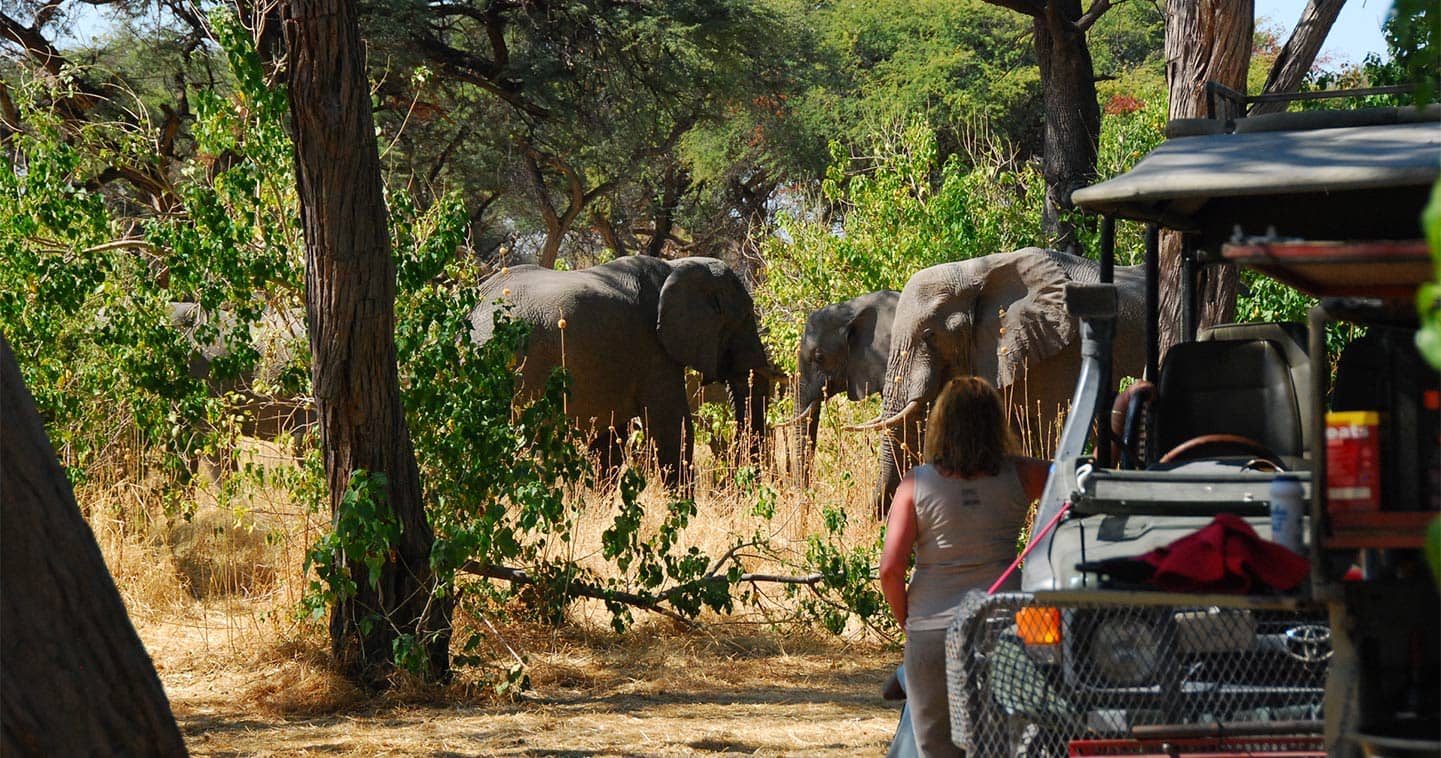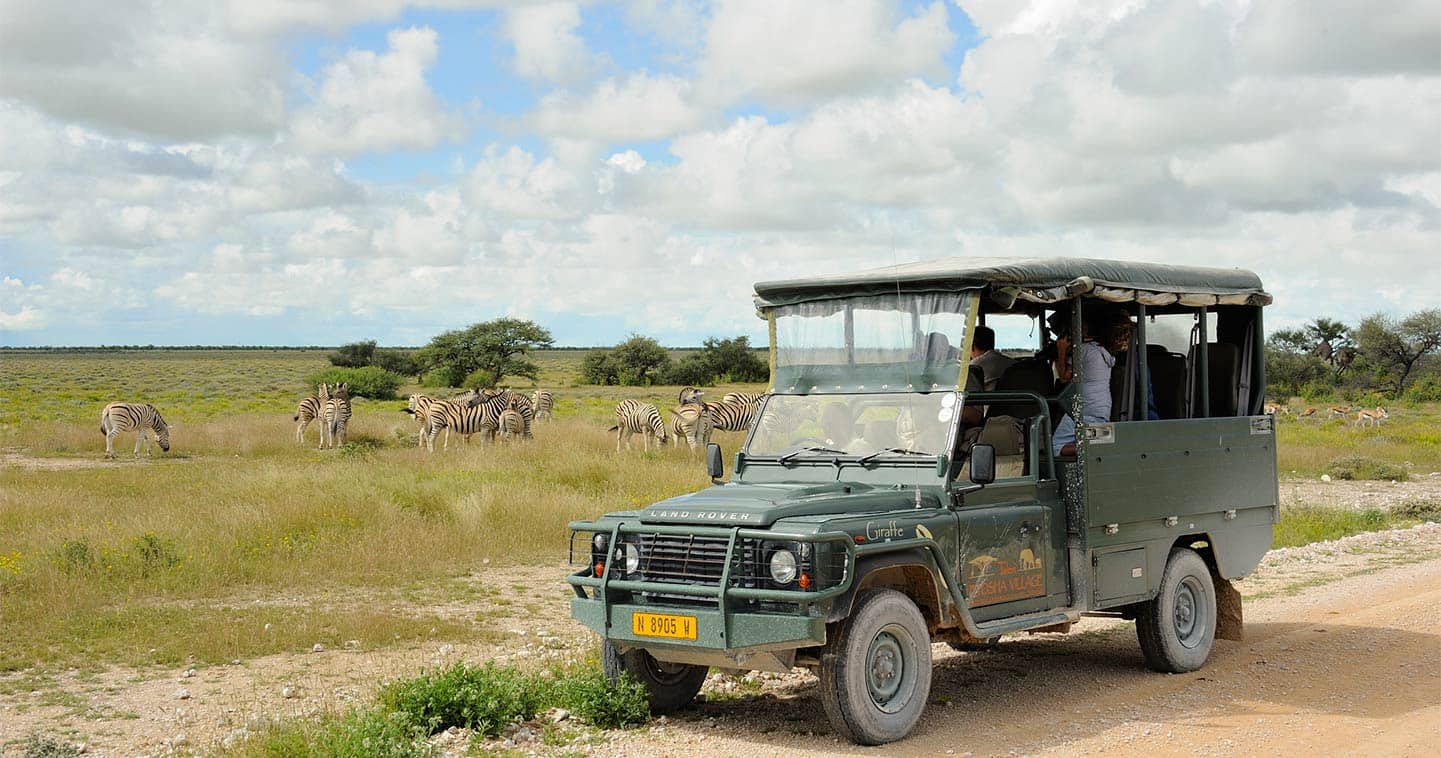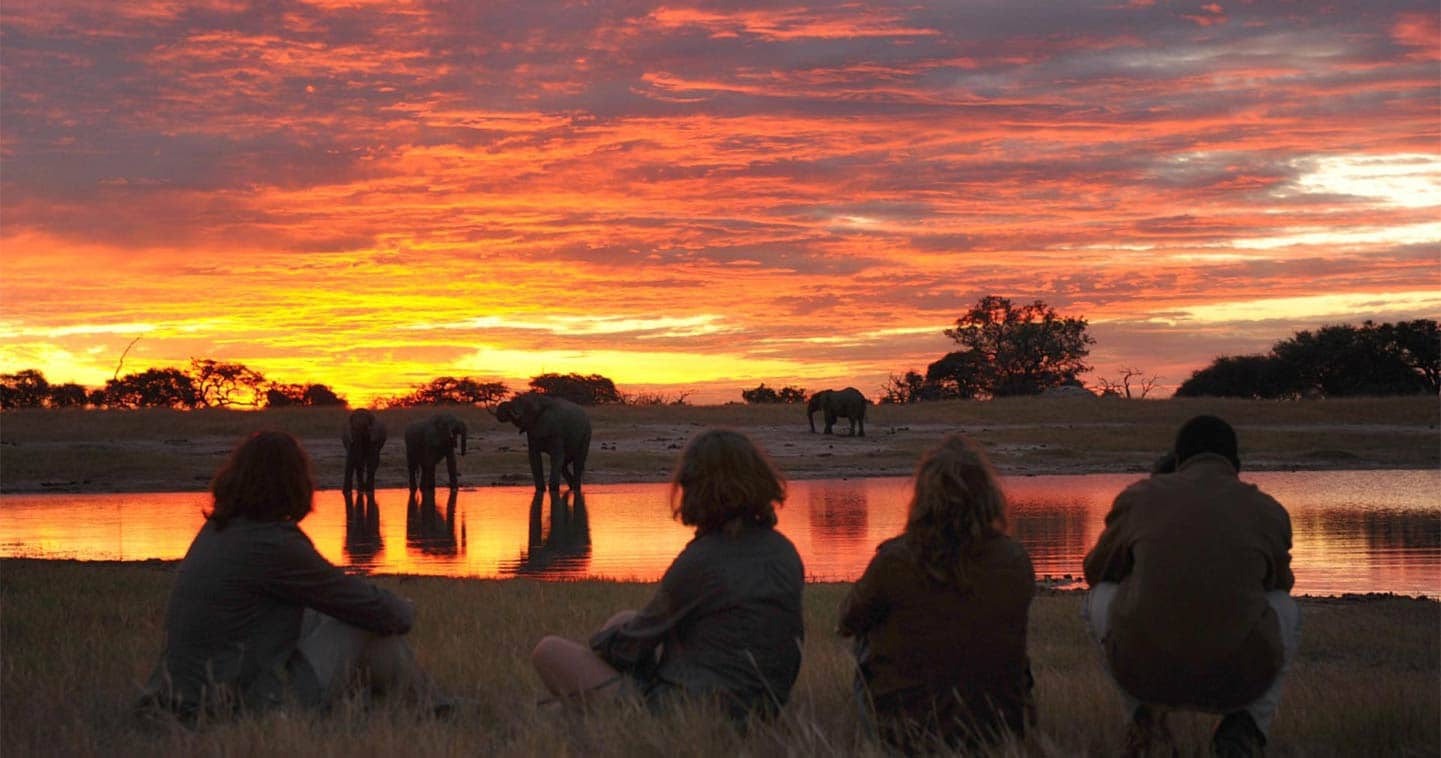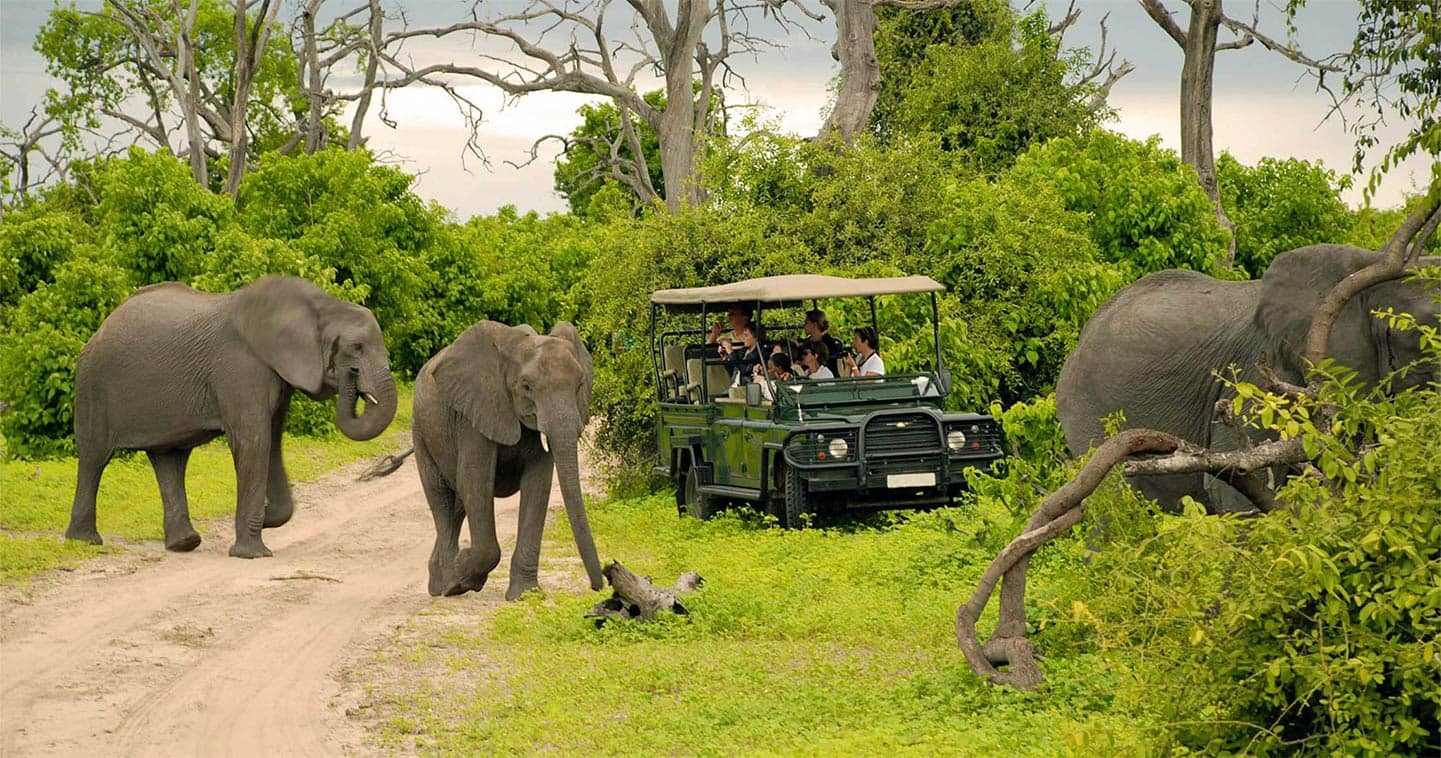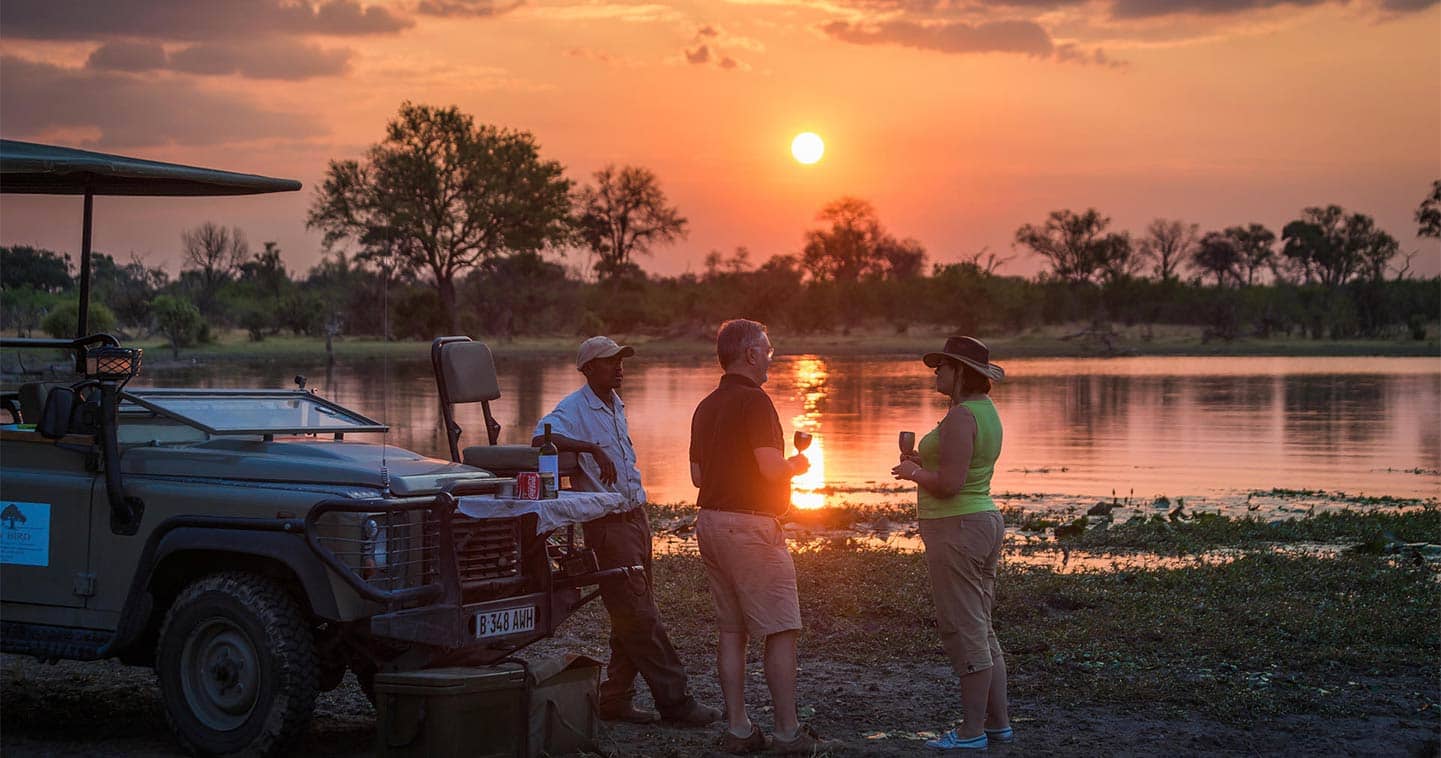Going on safari in Chobe
Packing for your grand safari in Chobe National Park
As you make the trip of a lifetime, you obviously don’t want to be distracted by over-packing items that become irrelevant obstacles. Therefore, we will try to answer all the questions you might have before you go. And, please do not hesitate to contact us for further information. Remember: what you pack also depends on how you are traveling, with who, and where you are going. If you are flying in for a short stay (no more than ten days), don’t to pack too much. Laundry facilities are often included in the Chobe lodges, so you’ll be able to dress in fresh clothing every day.
Do note that smaller chartered planes limit carry-on baggage to 10 to 12 kg, packed in a soft bag.
Here some other general guidelines.
Chobe safari clothing
Although a little shopping before your trip of course stirs the anticipation of going. But honestly, you don’t need a completely new wardrobe when you go on a Chobe safari adventure. Just leave your brightly coloured outfits at home and pack light.
- Bring some light fabrics and loose-fit clothing that dries quickly, in tranquil colours.
- Bring a warm sweater (or jacket) and scarf. Temperatures plummet in mornings and evenings; warm clothes during a game drive are a necessity. No worries if you are still shivering, camps also provide ‘bush babies’ (and you will soon find out what those are)
- Shorts for men and women are fine in the bush, but longer trousers are socially acceptable in rural villages
- It is accepted to dress casually in safari camps
- A squashable hat and sunglasses with good UV protection are essential
- Leave all your camouflage or military themed clothes at home: in Africa this is not considered appropriate clothing and the police might actually question you
- Wear lightweight footwear with ankle support if possible. Make sure the shoes feel comfortable and that you can walk in them for an extended period
- Bring a few pair of thin socks, rather than one pair of thick socks in your shoes. Several layers of thin socks is often more comfortable.
Useful safari tools
Although Chobe safari lodges usually provide everything you can possibly imagine, bringing some of your own tools is fun and useful. So what should you bring? Here are a few items we always put in our suitcases:
- Binoculars (to view animals from your private deck at any time and anywhere else);
- Your camera (of course!)
- An inexpensive, waterproof watch (leave expensive jewelry at home)
- Sunblock and lipsalve
- A small pocket torch
- Insect repellent
- Camps often provide water bottles, but you can bring one yourself, too
What does a Chobe safari day look like?
If this is your first safari trip (we feel your excitement!) you probably have been swiping through countless breathtaking pictures online, but you still might wonder what your safari day will actually look like. Although this can vary a bit from camp to camp, there is generally a day-plan most lodges follow, simply because the rhythm of wildlife and weather conditions are changeable. Be prepared to start the day early. Don’t worry if you are not much of a morning person; there is plenty of time for napping later in the day. We can also guarantee that the minute you are awakened by the sound of birds and hippos calling, you will become an early bird yourself. If you still don’t feel like waking up early, some lodges offer late morning game drives. Or simply enjoy the view from your own deck and wait for the afternoon game drive. It is all about doing it at your own pace, in the end.
A typical day in Chobe National Park
05.30 hours: wake up call by a soft knock and animal sounds, 06.30 hours: after fresh coffee or hot tea and a morning snack (often homemade muffins), the morning safari activity begins (this is typically a game drive) 09.30 hours: extensive breakfast.
10.00 hours - 15.00 hours: time to relax and have lunch. Some lodges offer guided walking tours after lunch.
15.00 hours: second game activity (again: either a drive, motorized boat trip or fishing): 19.00 hours: back in the lodge for sundowners and dinner; 21.00 hours: coffee, drinks, leisure time: 22.00 hours: time to rest your head full of memories. Sleep well!
Chobe bush cuisine & drinks
A five-star dining experience in the middle of the bush? No problem, if you leave it up to all the chefs, bartenders and servers in Chobe National Park. On top of all the wildlife, luxury suites and extraordinary views, is the excellent food. An active safari will make you hungry, so the delicious, gourmet food is not just the icing on the cake; it food nourishes the soul. Let your imaginations run wild for a while as you picture the most beautiful morning sky and a breakfast table filled with just-out-of-the-oven bread, fresh fruit, homemade granola and juices. Or how about mouthwatering cakes and pastries during an afternoon high tea? And after your afternoon safari activity, you will find yourself on your deck with a cold cocktail or African wine in hand, while the chefs prepare a hearty dinner. (And who knows: freshly made ice cream for dessert, perhaps?)
In short: you will be pampered when it comes to food. All meals, as well as coffee and tea and (often) local brand drinks, are included in the price. Some lodges offer fishing and, if not restricted to catch and release, you can actually prepare your own fresh fish, straight from the clear waters to your plate. This is how you can get a true taste of Africa.
Without giving away all the surprises, meals are often offered at different locations. The traditional boma-dinner, an open area with a big fire in the middle, is a must (if weather conditions permit) and comes with traditional singing and dancing performances. And sometimes, unforgettable moments are in simple things: maybe it is an excellent gin-tonic after an exhilarating day, while you share stories with your family or other guests.
If you have any dietary requirements, please inform your us accordingly; the chefs are more than happy to oblige. Arriving late? Please call the lodge ahead, so they can prepare a late night dinner for you.
A few words on Chobe safari safety
Going on a safari is extremely thrilling and exciting, but comes with a few safety issues.
In national parks and private game reserves with big game it is absolutely prohibited to get out of your car, unless accompanied by armed rangers or/and guides. Sadly enough, each and every year there are reports from South Africa of travellers ignoring this simple rule, with all its consequences.
In Chobe Botswana, a guide in a special safari vehicle usually picks you up from a small airstrip. Once you are in the lodge, listen carefully to the briefing provided by your ranger or accommodation staff. They always know what game is currently roaming in the vicinity of the lodge.
Many Chobe lodges are not fenced; wildlife can freely enter the premises and will do so. For this reason it is not allowed to walk unaccompanied around the lodge after sunset. Would you like to go to the main building, restaurant or bar? Just call the reception and they will send someone to escort you from your room.
Photography: frame your Chobe safari memories
An extraordinary sunset and an elephant spraying water over his back in the Chobe River, or a cheetah prowling towards a prey, with its amazing coat contrasting sharply with a blue sky - you get it: Chobe National Park is a true paradise for photographers. To make sure you bring home the best results, here a few recommendations. Also, many of the guides love to help you take that perfect shot.
The best results are achieved by using a (digital) SLR camera with one or more lenses. For photography of wild animals a lens with a minimum range of 200 mm is crucial, preferably a 300 mm lens. For landscape photography, a wide-angle lens (24 mm or less) is recommended. Beautiful portraits can be taken with lenses with a fixed focal length (usually a 50 mm lens provides good results) and large aperture. Don't feel like carrying big bags of photo equipment on your South Africa safari? An 18-200 mm telezoom lens produces beautiful pictures, and pretty much all subjects are within range. Because you will probably drive on unpaved roads, dust can easily migrate onto your camera gear, so for your South Africa safari, protect your equipment with a quality camera bag and stock lens covers for capturing all the flawless memories.

